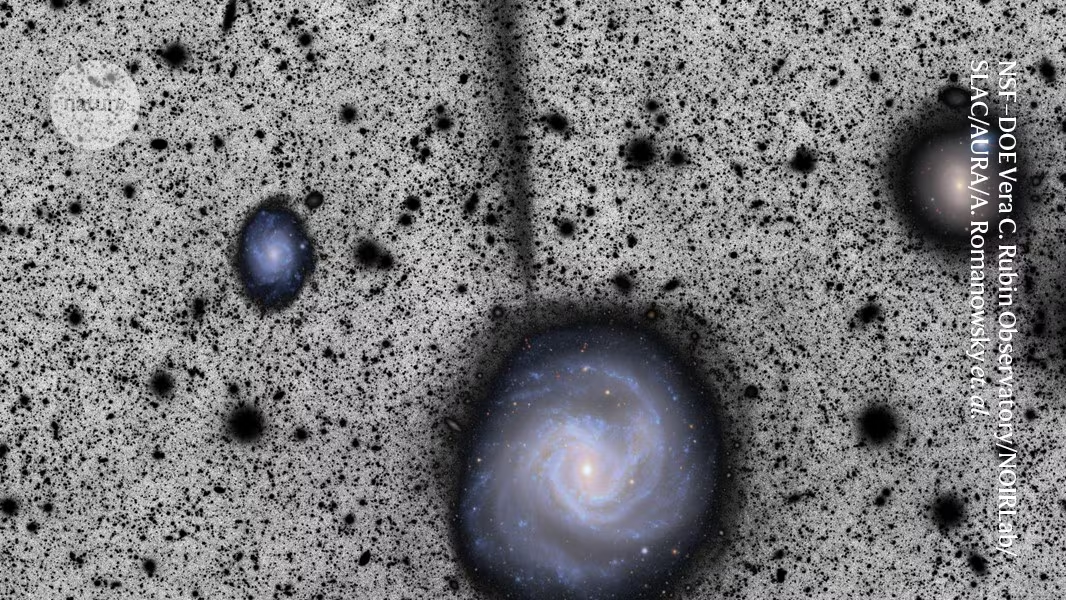An Iconic Galaxy’s Hidden Past: The Stellar Stream Found on M61
The majestic spiral galaxy Messier 61 (M61), long considered a textbook example of a pristine, undisturbed ‘grand design’ spiral, has revealed a profound secret: a massive, faint stellar stream stretching far into space. This unexpected discovery, made possible by the unprecedented depth of new astronomical surveys, suggests that M61’s evolutionary history is far more violent and complex than previously assumed, potentially forcing scientists to revise their models of how large galaxies grow.
The finding, recently detailed in the journal Nature, challenges the notion that M61 has evolved in isolation. Instead, the newly observed “tail” is the tell-tale sign of a recent gravitational interaction—most likely the tidal shredding of a smaller, companion dwarf galaxy.
Unveiling the Faint Tail: The Power of Deep Sky Surveys
The reason this feature remained hidden for decades lies in its extreme faintness. Stellar streams are diffuse structures, often 10,000 to 100,000 times dimmer than the night sky background, making them invisible to all but the deepest, widest-field surveys.
The breakthrough came through data collected by the Vera C. Rubin Observatory’s Legacy Survey of Space and Time (LSST), a monumental project designed to map the entire visible night sky with unparalleled sensitivity. Astronomers, including a team led by Dr. Aaron Romanowsky, utilized this deep imaging to pierce the cosmic veil surrounding M61, which resides approximately 52 million light-years away in the Virgo Cluster.

The team was able to process the data to highlight the subtle differences in stellar density, revealing a coherent structure—the stellar stream—that had been gravitationally stripped from a smaller galaxy. This process, known as tidal disruption, occurs when a massive galaxy’s gravitational forces overwhelm a smaller satellite galaxy, pulling its stars into elongated, ribbon-like paths.
Rewriting M61’s Evolutionary History
M61 has always been classified as a grand design spiral galaxy, characterized by prominent, well-defined spiral arms and a relatively smooth, symmetric structure. Such galaxies are often assumed to have had a quiet past, avoiding major mergers that would disrupt their delicate form.
The presence of this significant stellar stream fundamentally alters that narrative.
“Finding such a pronounced tidal feature on M61 is like finding a massive scar on someone who claimed they’d never been in a fight,” stated one of the researchers involved in the study. “It provides undeniable evidence that M61 has recently (in cosmic terms) consumed a smaller galaxy, a process that is crucial to the build-up of massive galaxies like our own Milky Way.”
The stream’s length and morphology allow astronomers to estimate the timeline of the interaction. While the exact date is still being modeled, the stream is relatively young, suggesting the merger event occurred within the last few billion years.
Implications for Galactic Growth Models
The discovery supports the prevailing cosmological model of hierarchical structure formation, where large galaxies grow by continuously accreting and merging with smaller ones.
However, the finding raises a critical question: How did M61 maintain its near-perfect grand design structure despite undergoing a recent, significant merger?
- Possible Explanation 1: The consumed dwarf galaxy was relatively low-mass, meaning its disruption was localized primarily to the halo (the outer, spherical region) and did not significantly disturb the main stellar disk.
- Possible Explanation 2: The merger occurred along a specific orbital path that minimized the gravitational shock to the spiral arms, allowing the galaxy to quickly settle back into its symmetric form.

Stellar Streams: The Fossil Record of the Cosmos
Stellar streams are invaluable tools for astronomers because they act as the fossil record of galactic history. They are the remnants of satellite galaxies that have been torn apart by the gravitational pull of their larger hosts. By studying the shape, length, and stellar composition of these streams, scientists can deduce several key pieces of information:
- The Mass of the Host Galaxy: The speed at which the stars are pulled away helps calculate the total mass, including the elusive dark matter, within the host galaxy’s halo.
- The Merger History: The number and complexity of streams reveal how many smaller galaxies the host has consumed over cosmic time.
- Dark Matter Distribution: The streams’ paths are influenced by the gravitational potential of the dark matter halo, offering clues about its shape and density.
Prior to the advent of ultra-deep surveys like LSST, most known streams were found around the Milky Way. The M61 discovery confirms that these tidal features are common throughout the universe, even around galaxies that appear outwardly serene.
Key Takeaways
This surprising astronomical finding fundamentally shifts our understanding of the iconic M61 galaxy:
- The Discovery: Astronomers found a massive, faint stellar stream (or ‘tail’) extending from the grand design spiral galaxy M61.
- The Method: The stream was detected using ultra-deep imaging data from the Vera C. Rubin Observatory’s LSST survey, which is sensitive enough to capture extremely low-surface-brightness features.
- The Implication: The stream is evidence of a recent tidal disruption—M61 consumed a smaller dwarf galaxy within the last few billion years.
- The Challenge: The discovery challenges the previous classification of M61 as a ‘pristine’ galaxy and forces a re-evaluation of how grand design spirals maintain their structure despite mergers.
- The Context: This finding reinforces the model of hierarchical galaxy formation and demonstrates the power of new, deep-sky surveys in uncovering the hidden history of the cosmos.
Conclusion: Looking Ahead
The detection of the M61 stream is just one of many expected discoveries as the LSST continues to deliver its full dataset over the coming years. This new era of deep, wide-field astronomy promises to reveal the merger histories of thousands of galaxies, providing a complete picture of how structure formation has unfolded across the universe.
Future research will focus on detailed spectroscopic analysis of the stream’s stars to determine their chemical composition and age, which will help pinpoint the exact nature of the consumed dwarf galaxy and refine the timeline of the interaction.
Originally published: November 7, 2025
Editorial note: Our team reviewed and enhanced this coverage with AI-assisted tools and human editing to add helpful context while preserving verified facts and quotations from the original source.
We encourage you to consult the publisher above for the complete report and to reach out if you spot inaccuracies or compliance concerns.

